Party-line or full-duplex intercoms allow for the simultaneous transmission and reception of audio from all connected stations, i.e. effectively there is an audio 'bus' and each station takes a feed from it and routes this to its headset, and also adds a signal from its microphone that is then available to the other stations. The connecting wire can be either balanced or unbalanced.

simulate this circuit – Schematic created using CircuitLab
My question is: how do you add these signals together? Do you simply connect the outputs of the output op amps at each station together onto the wire (via some form of AC coupling, perhaps?).
Is that what this guy does in this circuit here?: ComClone2 Circuit Diagram

